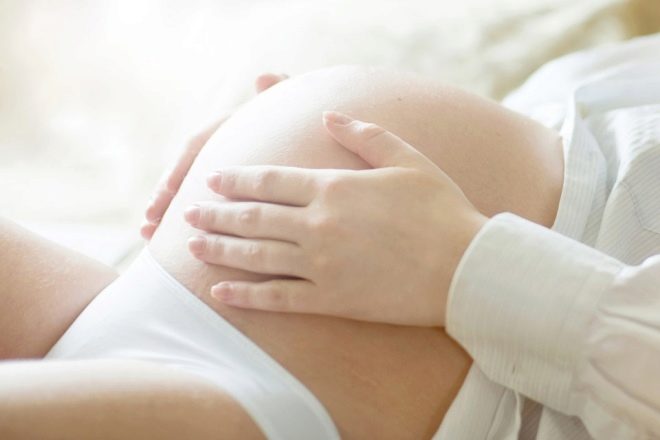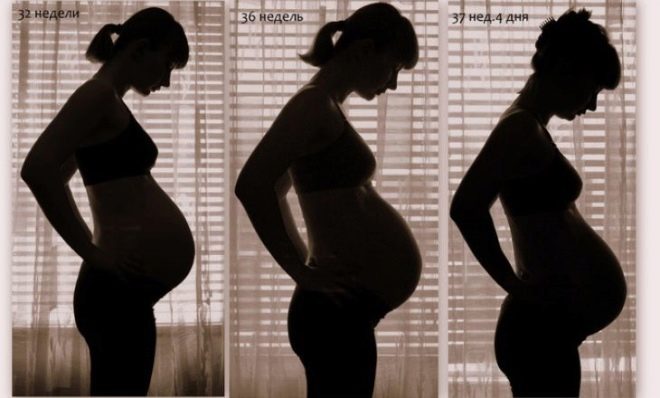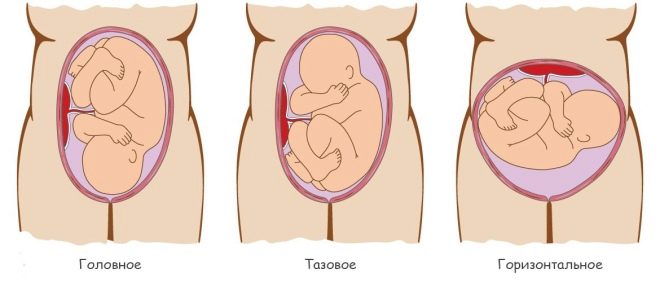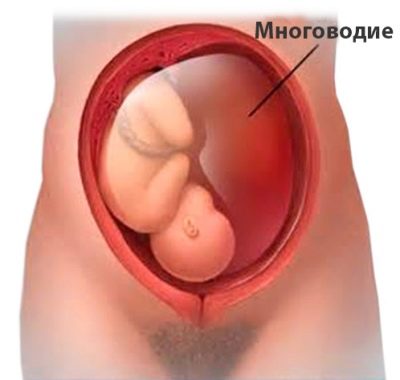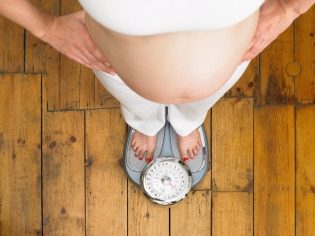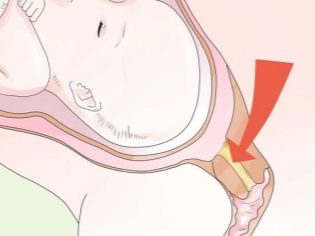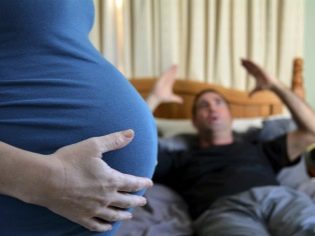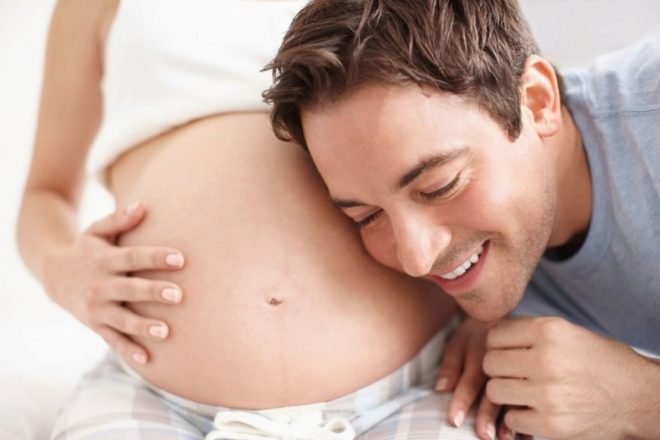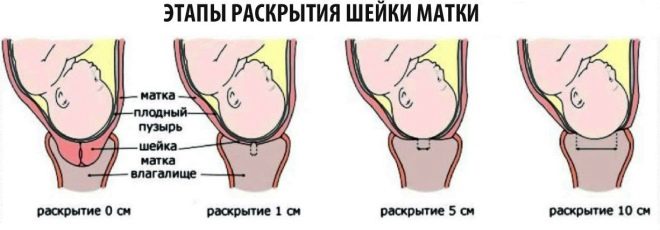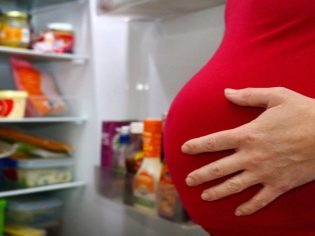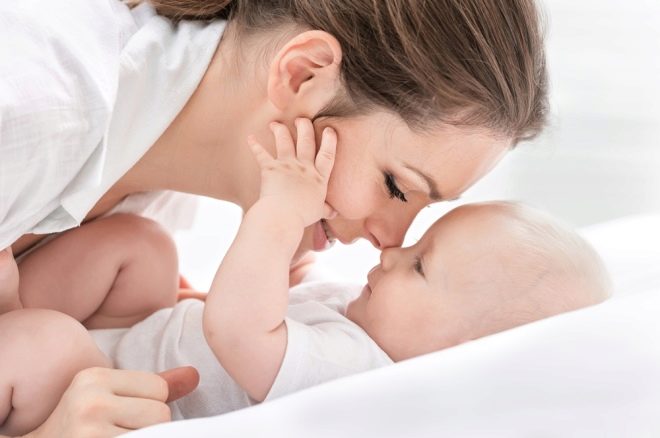Harbingers of birth in figurines
A woman who is going to become a mother for the first time, rightly worried and worried, is afraid to miss the important moment of the onset of labor, and therefore begins to listen to her body in advance and wait for “prompts” from him. Understand your own feelings, especially if there is no generic experience, it can be quite difficult. In this article, we will talk about what the so-called precursors of labor in primiparas can be and how not to confuse them with the complications of pregnancy.
"Tips" of the body - what are?
The female body is very wise. Nature has provided for him not only large compensatory abilities, but also the ability to anticipate, anticipate the imminent changes. This ability is most clearly manifested in the run-up to childbirth. Therefore, for the attentive and observant pregnant woman, the beginning of the labor process does not come as a surprise at all.
Specific specific symptoms that occur a certain time before the onset of labor are called precursors. At the same time, it is not the individual signs that are assessed, but the total set of symptoms. Harbingers are always individual.
From the point of view of medicine, there are signs reliable and subjective. The former have a clear physiological rationale, the latter are more dependent on the sensitivity of the expectant mother, on her temperament, characteristics of pregnancy, and so on.
In any case, the combination of reliable symptoms with subjective ones makes it quite easy to understand that childbirth will begin soon.
What happens in the body
To understand where the precursors come from, you need to be well aware of how large-scale processes take place in the female body as the birth date approaches. It is these processes that are not visible to the eye that are manifested physiologically. The totality of internal processes develops incrementally and at a certain point leads to the onset of labor.
Practically all organs and systems, hormones, hemostasis, the nervous system, are involved in the preparatory process, but the most active changes occur in the following directions.
Uterus
The reproductive organ has already fulfilled a very important task - it provided the child with an environment for maturation and growth. Now, the uterus needs to perform another equally important thing - to help the baby be born into the world. The uterus must reach maximum weight. In the second half of the third trimester, the neuro-contractile apparatus of the organ begins to prepare. Without this preparation, the uterus will be the usual “bag” and will not be able to push the baby away or shrink to its former size after the birth.
In order to make contractions possible, myometrial fibers begin to shorten, and a special type of protein, actomyosin, begins to be synthesized in the muscle cells of the uterus. It is he who is responsible for ensuring the possibility of a decline. 1-2 weeks before delivery in the uterus, the number of nerve fibers is reduced.
Placenta
"Baby Place" is rapidly aging. After 35 weeks of gestation, the process of wilting begins and lasts up to 40 weeks or until the moment of delivery. The placenta begins to produce a hormonal substance several days before the birth, without which contractions will not occur - oxytocin. She is helped by the pituitary gland of a woman.
Hormones
During pregnancy, from the first hours of her life, progesterone prevailed in the woman’s body.He was responsible for feeding the child, maintaining pregnancy, reducing the tone of the uterus. Before childbirth, the production of progesterone decreases in a few days, but the concentration of oxytocin and estrogen increases. In response to a change in the hormonal balance in the body, multiple rearrangements begin, and the nervous system is drawn into it. The brain becomes less sensitive to nerve impulses, but the sensitivity of the spinal cord, on the contrary, increases.
Metabolism
The body, shortly before birth, is stored with substances that should provide birth, in terms of energy potential. Glycogen is stored, electrolytes.
Blood condition
The blood becomes thicker. The number of platelets increases, the blood clotting time decreases. This is necessary in order to prevent lethal bleeding during childbirth. How much these processes affect the well-being of a pregnant woman depends on her individual sensitivity.
Features of the approximation of the first birth
The harbingers of the “primordion” and more experienced women who give birth not for the first time will differ. First of all, the timing of its offensive. The first harbingers of women before the second or third birth usually appear within a few days, at 38–39 weeks, or even at 40 weeks. First-timers will have to wait longer - the symptoms of the approaching labor may appear two or four weeks before the expected date of birth. This is due to the fact that all the preparation at the physiological level lasts longer before the first birth.
For the first time, tissues and muscles of labor are less elastic. The nervous system prepares longer for generic processes. In most cases, women before the first birth more nervous and worried, and therefore themselves interfere with their nervous system and create muscle "clamps". For the same reasons, the first birth is usually longer than the second or third.
At what time most often start precursors? If the first childbirth is coming, then it is worth waiting for signs of their approach at about 35–36 weeks or a little later. Are forerunners required? Optional. There are women who claim that they did not feel anything unusual before giving birth. This does not mean that their body was not prepared for the process, it is a manifestation of the individual characteristics of perception.
After how long to wait for the birth after the first harbingers is also a question, in which there is a lot of individuality. It all depends on how quickly the body will overcome the stages of preparation. The first birth is usually as close as possible to the expected date of birth (DA). It is more difficult to say, delivery options are possible at week 39–40, and possible at week 41–42.
If there are no precursors, this does not mean that the birth must necessarily be delayed. Too early onset of symptoms before the 34th week of pregnancy is often a sign of a threat of premature birth.
Signs of
In search of signs, the forerunners of the fantasy of the first-born woman can lead her into such jungle from which it will be difficult to get out. Women who do not have generic experience tend to think out and feel what is actually absent or mistakenly perceive any changes in their state of health as forerunners. Let's take a closer look at what the real symptoms of precursors can be:
Abdominal prolapse
Usually this precursor is considered one of the first. From the point of view of doctors, it is fairly reliable and informative, that is, it really indicates an approaching birth. Abdominal prolapse is the result of the baby’s dropping to the very bottom of the uterus. Closer to childbirth, the crumb occupies the position from which he will have to begin a difficult journey through the birth canal after the cervix is opened. The child presses his head to the inner throat.
The woman notices that the stomach began to look somewhat different, his form became more elongated.And if earlier it looked like a basketball, now it looks more like an elongated melon or a rugby ball. Due to the lowering of the height of the uterus floor, the load on the diaphragm weakens, it becomes easier to breathe, stop shortness of breath and heartburn.
With a visible improvement, there are also disadvantages, which also do not take long to wait. After omission of the abdomen, the woman begins to run more often to the toilet for "small need" because of the pressure of the fetal head on the bladder, and she also has more cracks on the pelvis.
In the first birth, most often this symptom occurs about 2–3 weeks before delivery. But he is observed, by the way, not every future mother. With multiple pregnancies, the descent of the head of the fetus, which will be born first, is practically not felt by the woman. And also there will be no omission in those whose children in the uterus are not located in the head, but in any other position - sit or are located across.
If during the time of pregnancy, polyhydramnios was diagnosed, abdominal prolapse before birth will also not occur.
Weight loss
Women have long noticed - shortly before birth the weight decreases by 2–3 kilograms. Physiologically, this phenomenon is quite easily explained - in the body decreases the concentration of progesterone, which, among other things, contributed to the accumulation of fluid in organs and tissues. With a decrease in the level of the hormone, the amount of intercellular fluid also decreases, and therefore the weight begins to go away.
In 2–3 kilograms of claims, the decrease in the quantity of amniotic fluid can be attributed. The closer to childbirth, the less water produces amnion. This measure is necessary so that the fetal bladder does not burst prematurely due to increased intrauterine pressure, as the baby gains weight every day and takes up more and more space in the uterus.
In addition, diarrhea can begin, because the body with all its forces seeks to get rid of excess, so that the woman is easier.
Nature of discharge
Discharge from the genital organs is a rather important diagnostic feature. All women know about it. A few weeks before giving birth, they change their character. During pregnancy there was a so-called dry period, when under the action of progesterone there were few secretions, they were thick and scanty. As soon as the concentration of progesterone begins to decrease, the genital tract is one of the first to "show" that the conditions inside the body have changed. Vaginal secretion becomes more fluid and abundant.
Particularly noteworthy is the discharge of mucus plug. It closes the cervical canal and protects the baby from germs and viruses throughout the gestation period. But before the birth, when the cervix begins to mature, the cork comes out because it cannot be held inside the dilated cervical canal.
If it comes out one-time and in full, then it is quite difficult not to notice it - a large, gelatinous clot of yellowish or milky color, sometimes with blood streaks. But often the tube leaves the cervical canal in parts, and then they talk about a partial and systematic discharge of the mucous tube.
Usually, during the first pregnancy, the stopper leaves its place 5–7 days before delivery. The fact that this process took place or started, the woman must be informed to the attending physician. As soon as the tube leaves the cervical canal, some restrictions will be imposed on the life of the pregnant woman - she will not be able to lie and bask in a warm bath or have sex in order to prevent infections from entering the uterus.
Chest
The mammary glands in primiparous women shortly before the onset of labor become more sensitive, the breast begins to hurt more. The chest "is poured", clearly visible blue lines of the veins are seen through the skin. The inflorescences are expanding, becoming large, blurred, and there appear "Montgomery hillocks" on them.
In primiparoids, colostrum most often begins to stand out several weeks before the child is born.It is not necessary to be frightened, it is also impossible to squeeze it out. If there is no colostrum, then again this is not an indication that there will be little or no milk after delivery.
The breasts are prepared for women individually. In some, from the first month of pregnancy, it hurts and colostrum is released. In others, even before giving birth, the chest does not look painful. Therefore, this feature alone can not be a reliable symptom of the approach of labor.
In any case, the mammary glands require special care - they should be washed twice a day with warm water, and if colostrum is released, wear special liners in the bra so as not to soil the laundry.
Mood and Emotions
The hormonal background and psychological readiness for the birth of a child also affect the mood and well-being of the future mother. Very often, a couple of weeks before giving birth, a woman begins to experience causeless anxiety, anxiety. As the date of birth approaches, the anxiety may increase.
A precursor can be conditionally considered the state of emotional instability, when the mood of a pregnant woman begins to change spontaneously and almost uncontrollably. Quite often, according to expectant mothers, the quality of sleep is disturbed. Women suffer from insomnia.
Such symptoms require medical attention. Anxiety and anxiety will be helped by herbal medication approved by the doctor. They also help to improve sleep, because it is good to get enough sleep - a very important condition for successful preparation for childbirth, to prevent violations of blood pressure in childbirth. In addition to light sedative teas and pills, airing the bedroom and walking before bedtime in the fresh air will help.
Fetal activity
Babies usually subside before giving birth, becoming less mobile. This symptom is most often observed 3–5 days before delivery. It becomes difficult for the baby to move, in the uterus it is extremely crowded. In addition, there are suggestions that with a decrease in activity, children launch a mode of rest and energy storage in their own bodies, because in the process of childbirth the baby will also have to “work hard”.
Cervix
Cervical ripening is considered one of the surest signs of an approaching labor. Mature neck - shortened, smoothed, its length does not exceed 1-1.5 centimeters. In the process of maturation of the cervix, the nature of the cervical mucus changes, and a woman can also feel light tingling sensations, a slight “siphoning” in the lumbar region. But assessing the maturity of the cervix is the task of the obstetrician. This symptom will be checked on a planned medical appointment from the 38th week of pregnancy.
In case of insufficient maturity or immaturity of the cervix, the woman is offered hospitalization at the 39th week of pregnancy for preliminary medical preparation of the cervix for childbirth.
Other signs
Among other signs, which, rather, belong to the category of subjective ones, it is possible to note such an optional, but rather bright sign, as a manifestation of the ancient animal nesting instinct. Before the appearance of offspring, many females of different animal species prepare a nest (burrow) to ensure a higher survival rate for the young.
In humans, this instinct is manifested by an irresistible desire to wash something in the apartment, paint, stroke and wash. A couple of weeks before giving birth, a woman begins to intensively equip a home. Psychologists believe that this behavior is quite normal and, in addition to following the instinct of ancestors, gives a woman inner peace, the ability to reduce anxiety and fears, to distract from thoughts about the upcoming birth.
As well as the signs can be attributed to the increase in the number of training (false) contractions, changes in appetite. Either the woman begins to constantly eat, unable to cope with the feeling of hunger, or a few days before giving birth, she does not want to eat at all.
Sign of childbirth or pathology?
Watching her own condition, a woman should not forget that many of the symptoms that she can intuitively associate with preparing the body for childbirth can in fact be signs of pregnancy complications in the later periods. In order not to be mistaken, in all doubtful cases it is best to consult with an obstetrician-gynecologist, who can easily distinguish one from the other.
So, too much pulling back pain and in the lower abdomen can be a dangerous sign of the risk of premature birth, and too much weight loss may indicate a metabolic disorder. In cases of unusual discharge of green, brown, gray, discharge with an unpleasant odor, itching in the genital area, you should immediately consult a doctor, because such discharge is not a sign of approaching labor, but a sign of infection.
Liquid stool and nausea can be not only a sign of cleansing the body before childbirth, but also a sign of food poisoning, as well as a symptom of intestinal infections. And fetal activity can be reduced not only because of the upcoming delivery, but also because of the oxygen starvation of the fetus.
That is why it is important to ask all the questions of interest to a qualified doctor.
Reviews
Some young mommies, remembering the harbingers of their own first birth, say that they felt almost nothing. And only then, recalling the events of the past before the birth of the day, noted that the signs were still there, they just went unnoticed.
The most frequent precursors, according to reviews, are the discharge of mucus plug and abdominal prolapse. As well as women recommend primiparous to pay attention to the general emotional background. Very often, a few days before the onset of labor, pregnant women have unexplained tears and even hysterics, they feel lonely and offended.
About precursors of birth at 34-38 weeks of pregnancy, see the following video.








